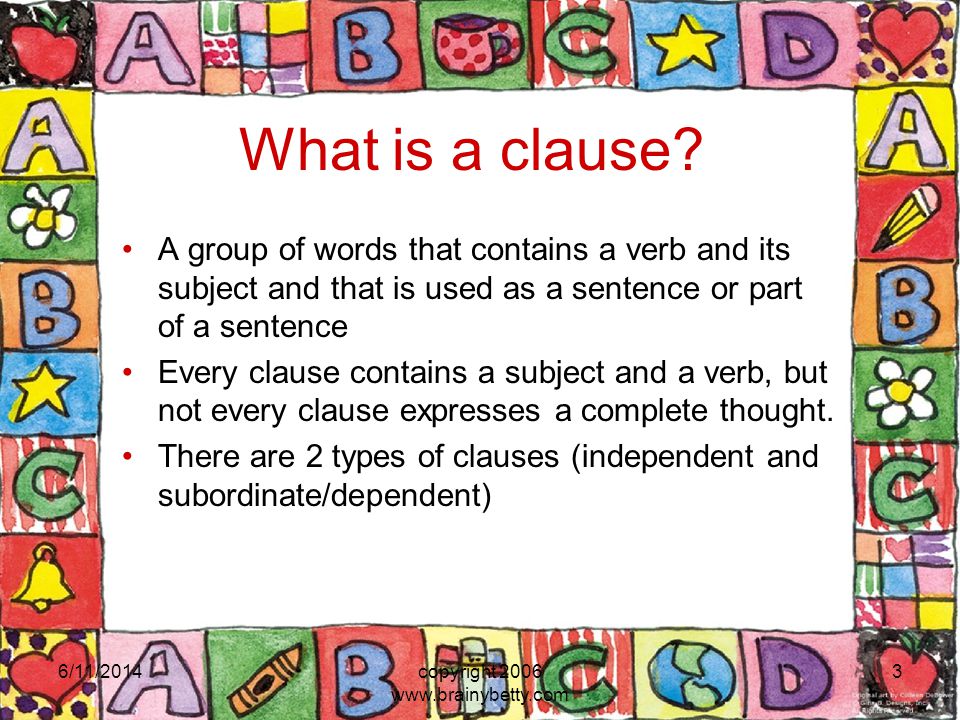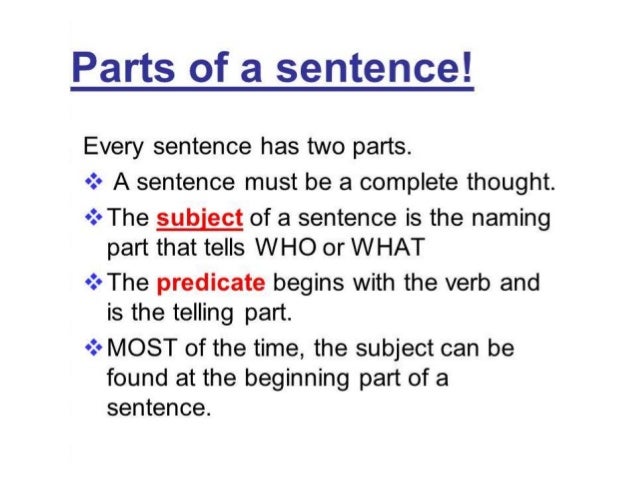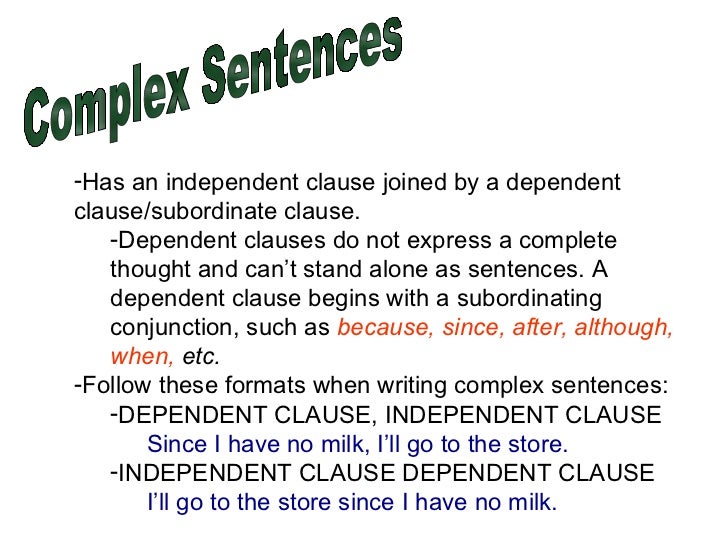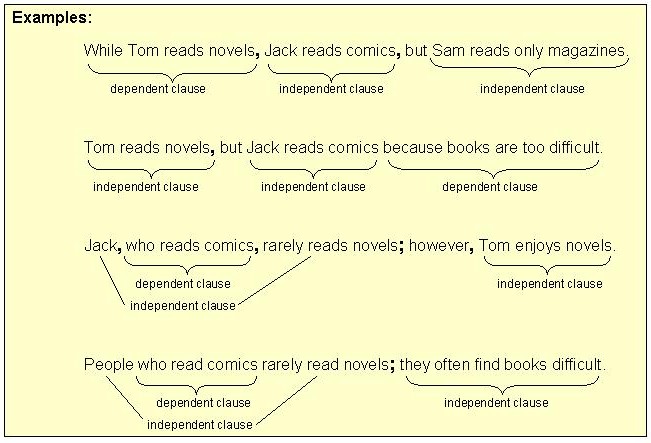Simple and Compound Sentences
There are mainly three kinds of sentences in English: simple, complex and compound.

 This compound sentence consists of three independent clauses.
We make compound sentences by joining independent clauses with the help of coordinating conjunctions.
More examples of compound sentences are given below.
This compound sentence consists of three independent clauses.
We make compound sentences by joining independent clauses with the help of coordinating conjunctions.
More examples of compound sentences are given below.
Simple sentence
A simple sentence consists of just one clause. Examples are given below.- The dog barks.
- The kettle boils.
- Birds live in nests.
- The boys are singing.
- Sitting on a branch, the monkey gibbered.
- The little girl was carrying a basket on her head.

Compound sentence
A compound sentence is made up of two or more independent clauses.- The boys sang and the girls danced.
- Men may come and men may go, but I go on forever.
 This compound sentence consists of three independent clauses.
We make compound sentences by joining independent clauses with the help of coordinating conjunctions.
More examples of compound sentences are given below.
This compound sentence consists of three independent clauses.
We make compound sentences by joining independent clauses with the help of coordinating conjunctions.
More examples of compound sentences are given below.
- You may watch TV or you can go out to play.
- You should either sit quietly or go out.
- The old man could neither see nor hear.
- He took the test several times but he couldn’t pass.
- He is famous, yet he is very humble.
- She was angry, still she kept her cool.
- The thieves not only robbed the man of his possessions, but also inflicted injuries on him.
- My car broke down on the way; therefore, I hired a taxi. (NOT My car broke down on the way, therefore I hired a taxi.)
- He lost all his money; nevertheless, he is cheerful.
How to write complex sentences
A complex sentence consists of one main clause and one or more subordinate clauses joined together with the help of subordinating conjunction(s).
Two clauses connected by relative pronouns or relative adverbs are also examples of complex sentences.
Writing a complex sentence is easy if you have a basic understanding of conjunctions and relative pronouns.
Study the examples given below.
Maria is a brilliant girl. She is 12 years old. She lives with her grandmother.
As you can see we have got three simple sentences. We can combine them together and form a complex sentence.
Maria is a brilliant 12 year old girl who lives with her grandmother.
Although we had three simple sentences, the complex sentence has only two clauses – one main clause and one subordinate clause – because we reduced one of the clauses into an adjective.
Here are some points to keep in mind when we combine simple sentences into complex sentences:
Avoid the repetition of words.
You will probably have to change words.
Add linking words like conjunctions or relative pronouns.
Another example is given below.
Her name is Susie.
She is a well-known singer.
She lives in Chicago.
We can combine these three sentences in two ways.
Susie, who lives in Chicago, is a well-known singer.
OR Susie, who is a well-known singer, lives in Chicago.
Exercise
Combine the following pairs of simple sentences into complex sentences.
1. John went to the movies. He had a lot of work to do.
2. Vishnu is a brilliant boy. He has won several honors.
3. Mark didn’t get the job. He lacked the necessary qualifications.
4. Harry is a baseball player. He is known all over the world.
Suggested answers
1. John went to the movies although he had a lot of work to do.
2. Vishnu is a brilliant boy who has won several honors.
3. Mark didn’t get the job because he lacked the necessary qualifications.
4. Harry is a baseball player who is known all over the world.
 Two independent clauses need to be connected with a coordinating conjunction or separated with a full stop or a semicolon.
Two independent clauses need to be connected with a coordinating conjunction or separated with a full stop or a semicolon.

 ]]>
]]>

